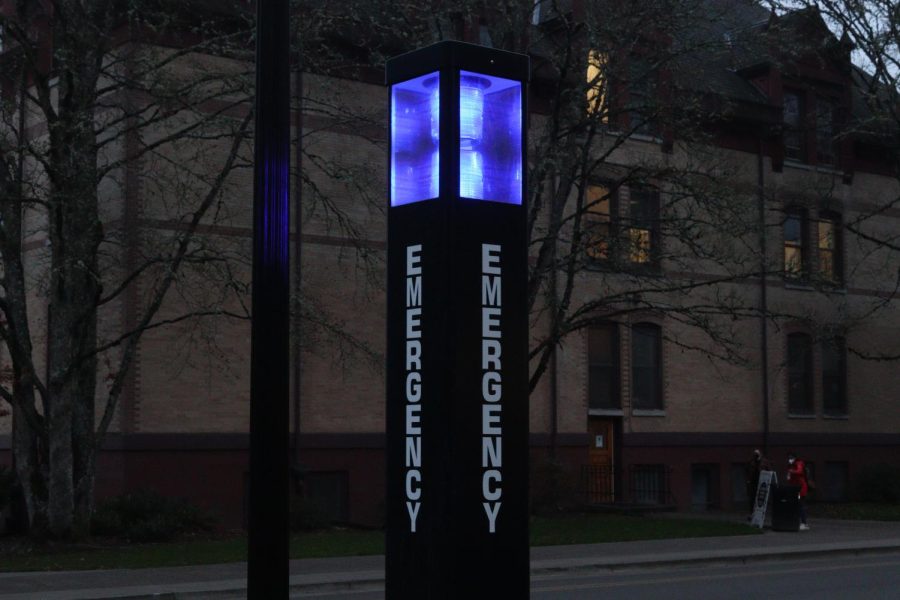SAFER club created to prevent sexual assult on campus
The blue emergency lights on Oregon State University’s Corvallis, Ore. campus that can alert police of emergenies can be seen outside the Student Experience Center. The SAFER club is another resource that can help students to have peace of mind knowing there is a community with acceptance and resources for those in need of them.
February 12, 2022
Oregon State University students have created an on-campus club with the purpose of helping survivors and allies to come together and end cycles of sexual assault.
Students Active For Ending Rape is a club that was started after OSU students noticed the Survivor Advocacy and Resource Center cutting down services due to COVID-19 restraints.
“[SAFER is] a student club that’s going to be both educational and a community that supports survivors as well as educates students and staff at OSU about healthy consensual relationships and healing from trauma,” said Brianna Corbett, the president of SAFER.
According to Andrea Haddadin, the secretary of SAFER, she wanted a safe space that is easily accessible to students.
“I know a lot of people in college when they experience [sexual assault], it’s really hard to actually go to SARC,” said Andrea Haddadin, the secretary of SAFER.
Liz Babcock, a student at OSU and member of SAFER, said she wants to increase the education students and staff receive on campus. Babcock said she believes that this club will help people learn how to be a better advocate and ally.
“I know, at least for me and a few other people, it’s somewhat easier to talk to somebody your own age, who’s one of your friends or somebody that you met that has gone through the same thing than talk to somebody that you could consider higher up because they’re helping you out, but this is more like peer-to-peer conversations,” Babcock said.
According to Corbett, one of the big goals for the club is to make it a safe space for everybody, for all genders, sexualities and races, and any survivor of sexual assault. The club also wants to create a space for anybody to learn more about sexual assault and rape.
SAFER plans to do this by working with SARC and Student Health Services to work on the sexual assault mandatory presentations that are presented to fraternities, sororities and freshmen during START week.
Haddadin said SAFER also plans for yoga and craft nights, among other relaxing activities.
“We want to look at more trauma-specific services and also bring in different health care providers into the club,” Corbett said.
According to Corbett, everyone involved with SAFER is also still learning, so while they are educating and teaching others, they are also open to being educated themselves.
SAFER plans to fund their club in various ways. Nelson van de Lindt, the SAFER treasurer, said he is trying to get corporate funding for the club and may be one of the first clubs to do so. He said he has plans to work with places like Kaiser Permanente, a medical corporation.
“[We] just [want to] see what funding we can actually accept as a club from OSU, and then if we can’t accept it from a corporation, how we can work with OSU to make that something we can do,” Van de Lindt said.
Creating SAFER and having it be a safe place works when people are not nervous to come to meetings or ask questions, Babcock said.
“We want this community to be one where students leave the meeting feeling a sense of friendship and a sense of empowerment,” Corbett said.
Students can find SAFER under the club’s full name on OSU’s Ideal Logic website, or on their Instagram, @osusafer.










































































































